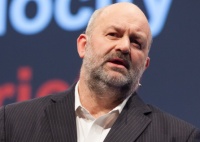Rise of the cloud spells gloom for enterprise IT vendors

Storms lie ahead for HP, IBM, Dell and any other major original equipment maker, due to the rise in cloud computing, three chief technology officers have hinted.

In a fireside chat on Tuesday at GigaOm Structure Europe in Amsterdam, Werner Vogels, Amazon's chief technology officer, was asked how the transition to cloud computing could effect enterprise IT hardware vendors.
"From my point of view I think individual companies will be buying less and less hardware all the time," Vogels said.
Along with these issues, Vogels said: "I think there will be less and less datacentres and we will be operating more and more of those."
It was not clear whether Vogels meant Amazon or cloud computing companies as a whole when he said this, but either way in my opinion this shift threatens the large OEMs.
Clouds build their own
Along with reduced demand for equipment from smaller companies, these OEMs cannot depend on demand from clouds. Google, Amazon and (it is suspected) Microsoft, build their own customer datacentre server, storage and networking gear. Building your own equipment "represents yet another layer of cost that you can squeeze out if you are doing infrastructure at a massive scale", Lane Patterson, the chief technology officer of Equinix, told me at the GigaOm event.
This cuts out companies like EMC, Cisco and Dell and sees the major cloud providers instead design their equipment and have it manufactured by an Asian original device manufacturer like Quanta or Wistrom.
However, vendors are fighting back by engineering their hardware and software together, such as Oracle via its Engineered Systems, HP via its Converged Infrastructure and IBM via its PureSystems.
"There are two opposite forces," Brian Stevens, the chief technology officer of Red Hat, said. "One is the large-scale cloud companies driving the consumerisation of [datacentre] technologies", and on the other side is "tin-wrapped software" from major enterprises, he said.
"Where cloud is headed, is you're going to be able to run more and more of your internal applications on someone's hardened, matured virtual private cloud platform," Patterson added. "As that happens, the guys that have the price advantage on that side will be the guys that build their own [equipment]."
In other words, unless you make processors, you can no longer depend on business from major datacentre operators.
Vogels did note that "it's hard for me to predict the future", but also said "the [cloud] shift will just happen", before pointing to the US federal government's ambitious datacentre reduction program.
As for the future of Amazon Web Services, Vogels said there are "things coming down the pipe that you would not believe", but did not give any further information. He hinted that new datacentres may be on the cards as Amazon "hasn't covered all the continents yet". Many analysts believe an Australian datacentre is likely.